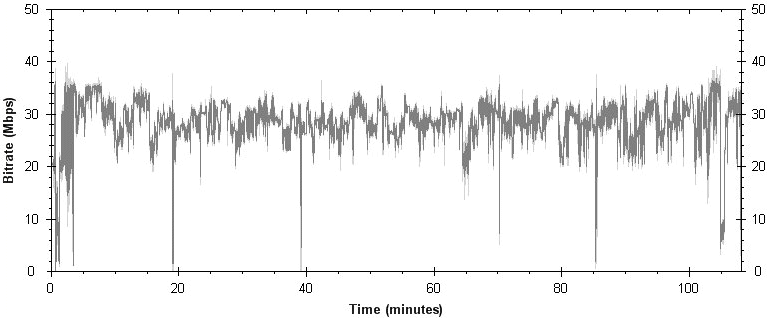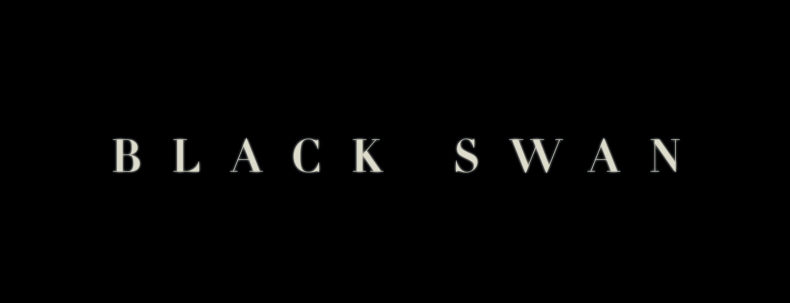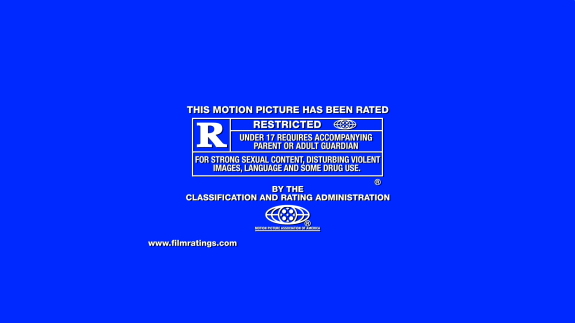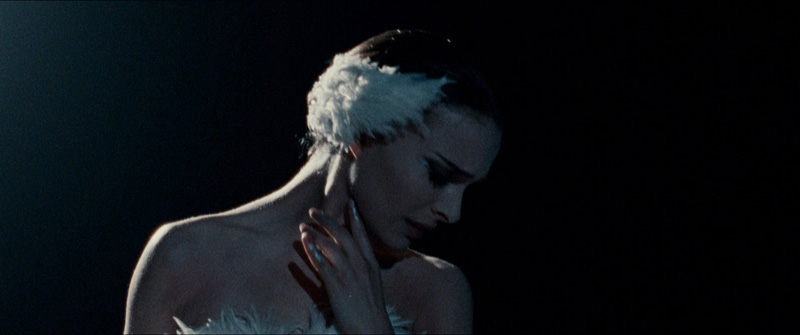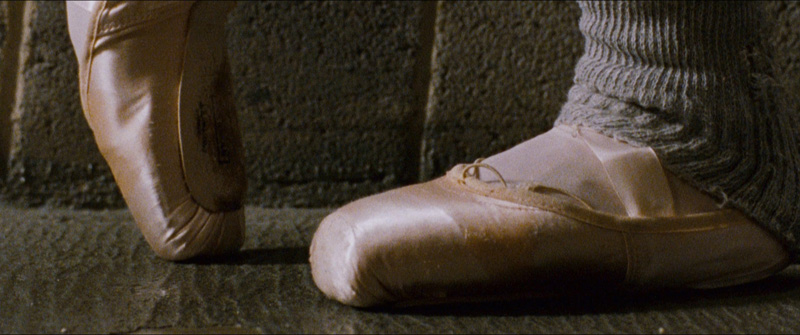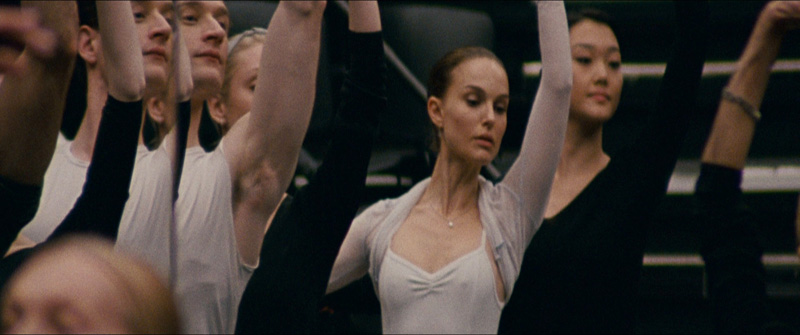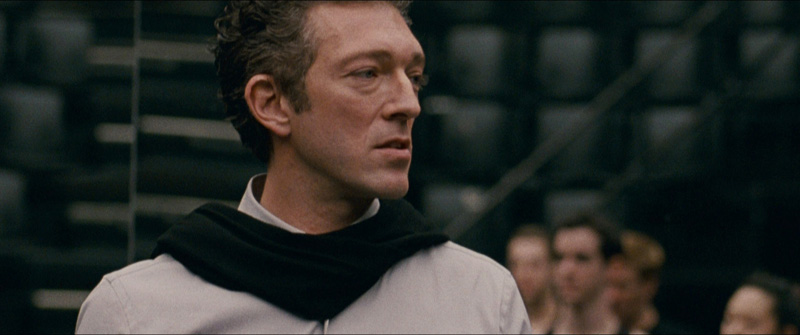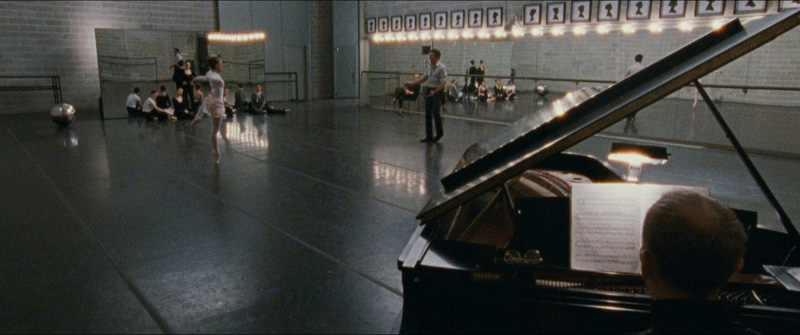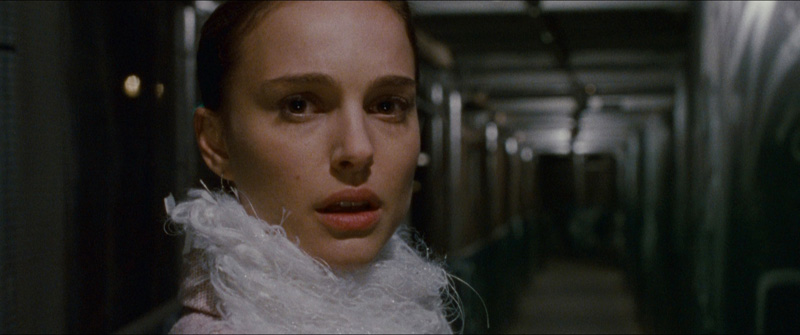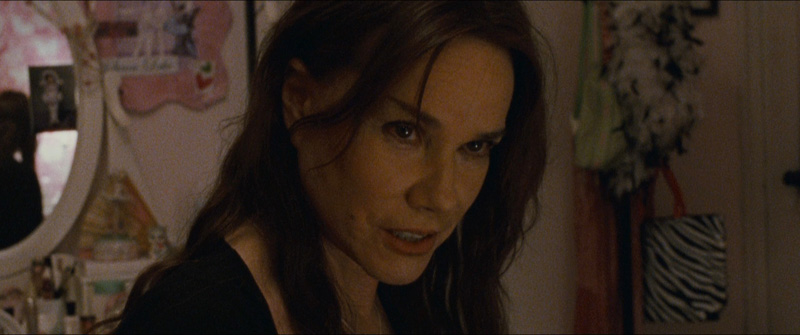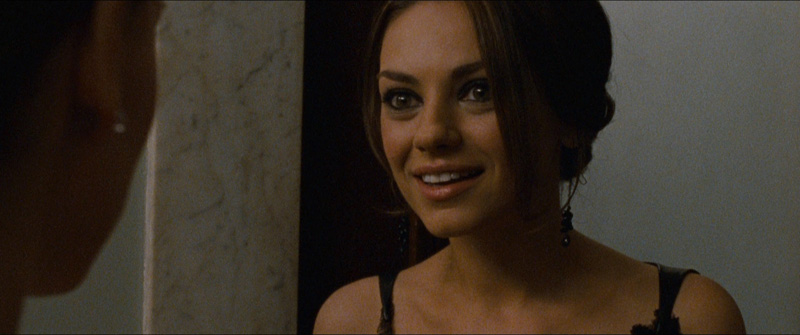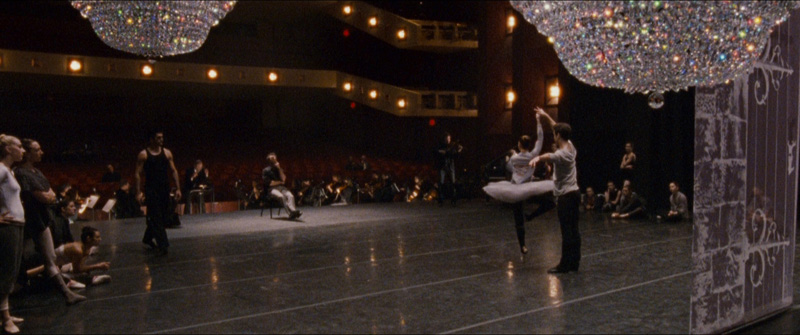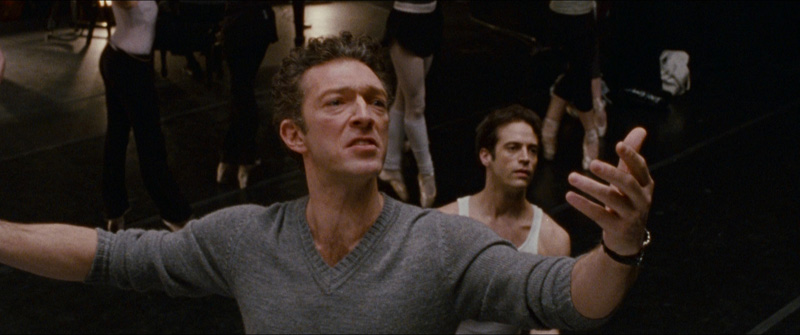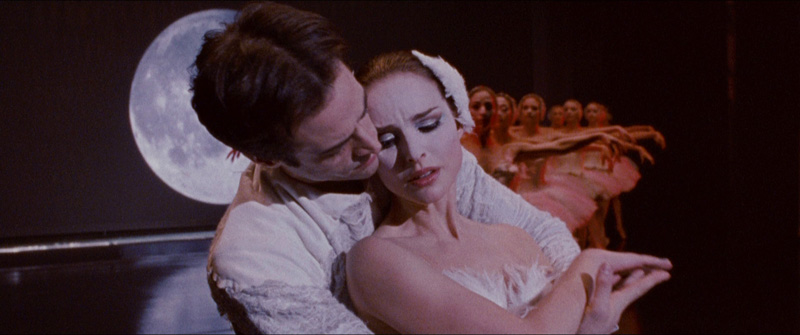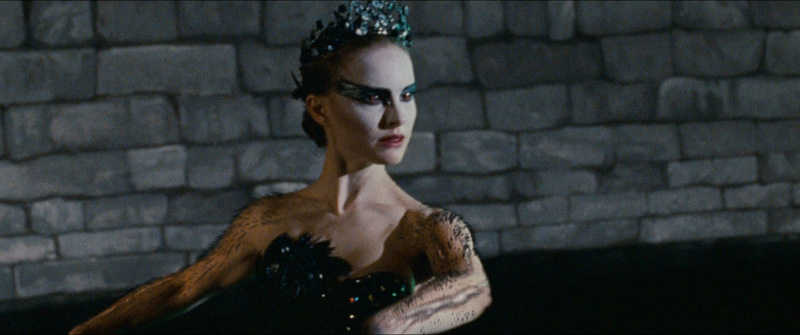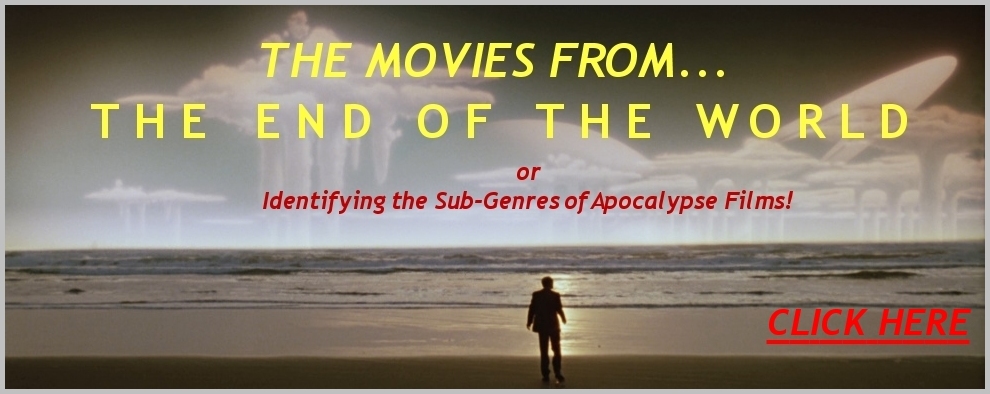Review by Leonard Norwitz
Production:
Theatrical: Protozoa & Phoenix Pictures
Blu-ray: 20th Century Fox Home Entertainment
Disc:
Region FREE
Runtime: 1:48:07
Disc Size: 42,413,320,490 bytes
Feature Size: 28,305,788,928 bytes
Video Bitrate: 28.50 Mbps
Chapters: 28
Case: Amaray Blu-ray case w/ slipcover
Release date: March 29th, 2011

Video:
Aspect ratio: 2.40:1
Resolution: 1080P / 23.976 fps
Video codec: MPEG-4 AVC Video
Audio:
English DTS-HD MA 5.1 (48 kHz / 3622 kbps / 24-bit)
Spanish Dolby Digital 5.1
French Dolby Digital 5.1
Subtitles:
English, French & Spanish, and none
Extras:
• Metamorphosis: a making-of documentary (48:50)
• Behind the Curtain - Production, Costume & Ballet (10:30)
• 2 Cast Profiles (6:00)
• 2 Conversations with Darren Aronofsky & Natalie Portman
(5:30)
• 5 Fox Movie Channel Presents (ca. 23 min)
• Theatrical Trailer - in HD
• BD Live
• Digital Copy Disc
Description: Darren Aronofsky's Black Swan, handily
one of the two or three best films of 2010, responds to the
adage: "You can't have your cake and eat it too."
Comparisons to the Powell/Pressburger 1948 classic ballet
film,
The Red Shoes, are inevitable, so right after I saw
the film when it came out in the theatre last year I
scribbled some preliminary fragments of thought before they
escaped me altogether:
In
The Red Shoes, this conflict is represented only
in the ballet itself. Beyond that, the "Red Shoes Ballet" is
merely a metaphor for a struggle which is, in my opinion,
more a projection of Lermontov's psyche than Vicky's. In
effect, it is he, not the dance, that catches up with Vicky
in the closing seconds as she runs out of the theatre. The
case for the struggle being centered in the call of the
dance is obvious, but at the moment, and in the context of
the 1948 film, I am inclined to think otherwise. Or,
perhaps, it is Black Swan that has persuaded me of this
idea.

Lermontov and Thomas (Nina’s impresario) take opposite
positions on the question of integration: "A dancer who
relies upon the doubtful comforts of human love will never
be a great dancer. Never." Perhaps the word "comforts" means
more to Lermontov than it does to Vicky. She merely desires
Love and expects it to be part of what it means to be a
woman. Whereas Thomas feels that Nina cannot dramatize the
part of the Black Swan without having experienced the joys
and pains of love. As he points out to her, she does the
White Swan, i.e. Innocence, perfectly. But her dancing of
the Black Swan lacks any spark of abandon, of sex.
In Black Swan the role of Lermontov is played by Nina's
mother, who insists that her daughter remain a child and
therefore an unintegrated, repressed and conflicted adult.
Like Lermontov, she has hopes that Nina will become a great
dancer, but unlike him, she neither expects it nor demands
it. I think she may actually know, at least at some level,
that Nina cannot be both a great dancer and remain a child,
to wit: when her mother became pregnant with Nina she gave
up a potential, if unlikely, career as a dancer. So as long
as she can keep her daughter from sex, she entertains the
fancy that Nina could have a career.
Poor Nina doesn't have a chance if she shares her mother’s
recipe for success. Her mother takes whatever side is handy
as long as it doesn’t involve boys. She seems sincerely
happy for Nina when she lands the role of her dreams (quite
literally) but at another point, she suggests that dancing
in the quartet of the "Danse des petits cygnes" is not such
a bad thing. But Nina has the bug now, and she must find a
way to rationalize her mother’s commandments with the
instructions of her director.
The Film:
9
It is not surprising that many who see this film take it to
be “about” ballet and what that art form requires of someone
to become a star ballerina. It’s an understanding of the
screenplay that works, if imprecisely and incoherently, as
if David Lynch’s
Mulholland Drive is about Hollywood and
what an aspiring actress has to go through to land a part in
a film.
In retrospect a hint at what else may be at play is revealed
in the final credits, as we see that each actor plays two
characters. But like any good story no time is wasted
setting things up at the outset. In Nina’s dream she sees
herself in the role of the white swan queen. At first alone,
she is soon under the spell of the sorcerer Rothbart,
dressed in black feathers. She tries to flee, but in vain.
Rothbart has stolen her soul. Nina misinterprets the meaning
of her dream, but this is perhaps because she is too close
to Rothbart in her waking life, or soon will be.
Or perhaps we might find an answer in the way Matthew
Libatique lights his film to compress the dynamic range or
that he often photographs Nina a few paces from behind her
as she walks through the corridors of her mind, as if she is
being followed, which she is, is she not? Is it responsible
in some way for that rash that appears on her shoulder? And
what about that she wears white while Nina’s mother, Erica,
and Lily, the company's new dancer and potential challenge
to Nina, wear black. All the more interesting in that Erica
and Lily are in the most direct competition for Nina’s
loyalty. Lily is Nina’s guide across the river into the
Hades where live sex, drugs and rock n roll, while Nina’s
mother demands deference as if Nina is still a young child.
Not least, we certainly can’t help but notice how much of
Aronofsky’s film is shot in reflections, often split or
broken, as she is.
Compressed, broken, split, repressed - Nina moves through
this hour and forty-five minutes like Vicky in that moment
in the Red Shoes ballet when she has fled from the carnival
and wanders in a mist of slowed motion and empty streets
only to find herself alone with fragments of her projected
loneliness and despair. How different Aronofsky’s approach
to a similar subject than was Ron Howard’s for A Beautiful
Mind where that director seemed more interested in tricking
his audience than engaging us in the process of a mental
breakdown.
Whatever might have been the filmmakers’ intention, I rather
enjoy seeing Aronofsky’s movie as a nightmare, one that
begins in what appears to the protagonist as a harmless, if
portentous dream and ends in a delirious, eroticized
metamorphosis. In this view, everything, and I do mean
everything, are projections of Nina’s psyche - of her
desires, repressions, conflicts, urges. She sees these
projections - uh, one moment please - I am suddenly aware of
Di Caprio’s explanation of how the dreamer affects the dream
in Inception - Indeed, Black Swan could easily be seen as a
shared dream. We share this dream with the characters in the
play. Like Thomas, Lily and Erica, we try to invade Nina’s
dream with our own projections. We want to steer her this
way or that and make it all come out in some rational way,
even if it is to explain Nina as psychotic. (Not my favorite
view, by the way)
All this psychologizing aside, there is a plot of sorts.
Nina (Natalie Portman) is offered the complex and demanding
dual role of the Black and White Swans in Thomas Leroy’s new
production of “Swan Lake.” While Thomas (Vincent Cassel) is
more confident about Nina’s technique than she is, he is far
less certain that she will be able to tap into the necessary
darkness and let herself go (which he seems to equate with
sex) to play the Black Swan. It is easy to see Thomas as
obsessed with conquest and sex - indeed, this is the view of
his previous “little princess,” Beth Macintyre (Winona
Ryder), who is about to be forcibly retired from both the
stage and his bed. But like most men in power, he is
probably only a narcissist who can’t tell the difference.
But no less obsessed with sex is Nina’s mother (Barbara
Hershey). In her way, Erica is as warped as Piper Laurie in
Brian De Palma’s
Carrie. She has done everything she could
to keep her daughter safe from the seductions of sex -
something she herself was unable to do and which resulted in
the burden of a child (“thanks, mom”) and loss of a career
as a dancer. Erica rationalizes that she protects her
daughter from the big bad world only for the sake of her
career. Like Lermontov, Erica believes she and Nina can’t
have Love and become a great dancer. It doesn’t take a Freud
to see that Nina’s mother resents her daughter, her youth
and beauty, her talent, and the possibility she could indeed
have both - or either one, for that matter.
As I said, poor Nina doesn’t have a chance. Her journey into
paranoia and delusion is inevitable, even if she gets to
wear her shoes and eat them at the same time.

Image:
8/8 NOTE: The below Blu-ray captures were ripped directly from the Blu-ray disc.
Like Nina herself, the image seems on the verge of breaking
down before our eyes, especially if you look at it closely
on a computer display. The focus is sharp enough, but every
effort is made to keep the characters just a bit shadowy and
murky until the final dazzling tableau. It’s a movie that
looks best properly projected, where there is sufficient
space and distance for the eye to fill in the molecular
structure, so to speak.
This is one of those movies where a score for image quality
can be misleading. While far from ingratiating, I do believe
what we see on Fox’s new
Blu-ray corresponds to the
filmmakers’ intentions. Unlike just about every other major
studio’s offerings these days, Black Swan was shot, not on
35 mm film, but mostly with a 16 mm camera with the support
of the Canon 5D Mk II full frame digital camera (I have one
of those for the very reason that it is capable of 1080p
video). The persistent grain apparent throughout the movie,
however, is not so much the result of shooting in these
media (cf: my review of
Pride and Prejudice) but the
use of flared and low light, plus, I suspect, a judicious
amount of post-processing. A bit of noise is inevitable, but
it is hard to tell it from the overall look of the film.
For these reasons, the resultant image may not win any
converts to high definition but it is presented without
blemishes, transfer issue or enhancements - certainly
without noise reduction. By the way, for all its darkness,
there is hardly any true black except in the opening dream.
Interesting: black at the beginning, ending in a fade to
white.
CLICK EACH
BLU-RAY
CAPTURE TO SEE ALL IMAGES IN FULL 1920X1080 RESOLUTION
Audio & Music:
8/9
A good deal of the musical score for Black Swan is derived
from Tchaikovsky’s immortal ballet, “Swan Lake,” the first
of his three masterpieces in the genre (the others being
nothing less than “Sleeping Beauty” and “The Nutcracker.”)
In Nina’s dream that opens the film, we hear his music in
its full orchestration, and it sounds glorious and rich, yet
never overpowers the action “on stage.” And so it is
throughout the movie, whether the music is played by a
rehearsal ensemble featuring Tim Fain’s solo violin work
(whose location on stage is correctly positioned and
balanced as POV changes), or a boombox recording of the
ballet music, a performance orchestra, Clint Mansell’s
subtle cues from the master or his own re-imagining of a
morsel of rehearsal music or music box. Black Swan is alive
with music, always in wonderful balance with dialogue and
effects.
Along with the usual ambient sounds, the movie is alive with
subtle and alarming audio cues from rustling feathers to the
whoosh of a passing subway train to point Nina’s attention
to some shadow that passes behind her or off in some corner.
The sound of creaking shoes on the dance floor and the
preparation of those shoes for the days work are among the
film’s many delights. Bass is relegated almost entirely to
the one club scene where the music is muffled, like Nina’s
consciousness.
As for the dialogue, Black Swan is remarkable for its
naturalistic approach to sound recording. I never had the
feeling that any of the dialogue was looped. In fact, in the
scene where Thomas first address the company as they warm
up, we can make out that his voice changes in quality as he
moves about the floor, facing this way and that, just as it
would if we were standing at the position of the camera.

Extras:
7
In place of an audio commentary, which would have been nice
I think, Fox offers two behind-the-scenes pieces. The first,
titled “Metamorphosis,” is spotlights filmmaker Darren
Aronofsky, Natalie and their crew, working under
extraordinary pressure of time, from the inception of the
dual roles of Black and White Swans, through various aspects
of production to her eventUAL her transformation into the
black swan. It’s an exceedingly detailed informative piece,
sometimes direct, sometimes indirect about the process. In
addition Darren and Natalie we get to hear from DP Matthew
Libatique who talks about lighting and the look of the film
he wanted. Also heard from at some length are Editor Andy
Weisblum, Writer Mark Heyman, Production Designer (I
especially appreciated her comments on blocking in relation
to how the actor naturally moved through her sets),
Prosthetic FX Artist Mike Marino and Visual FX Supervisor
Dan Schrecker. You want to know how they grew all those
feathers, Dan’s your man.
The second group of behind-the-scenes segments concern the
ballet, costume and production design. These are all too
brief to do their subjects justice, and Fox turns the knife
by failing to group them with a Play All. Fox makes the same
mistake regarding the remaining three features: a profile
each for Natalie and Darren (six minutes between them); two
post-production “conversations” between Natalie and her
director about preparing for the role and her dancing
(another six minutes - very EPK); most egregious is the
failure to group the five Fox Movie Channel presentations
(more EPK) focusing on the director and the four principal
actors (totaling 22 minutes, and well worth ignoring.) The
Fox Movie Channel pieces are all done in standard def
1.33:1. All the other features are presented in 1080p.
|
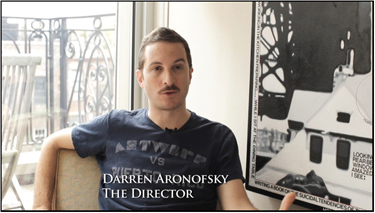 |
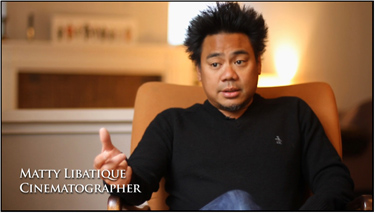 |
|
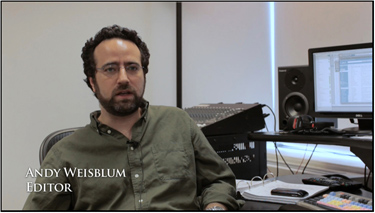 |
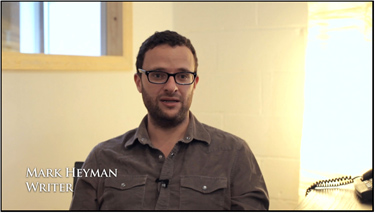 |
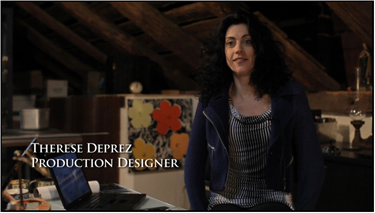 |
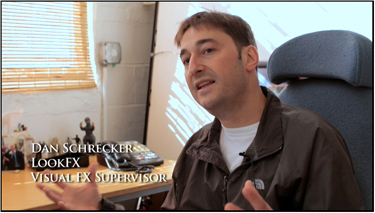 |
Bottom line:
9
Excepting the mostly routine bonus features and the absence
of a commentary (excepting again the very good fifty-minute
documentary), Black Swan is a must-see, must-heard, and
must-felt movie. And Fox has done all those involved proud. Aronofsky’s
Black Swan is a manifestation of an internal
conflict between irreconcilable forces. The screenplay
maintains the tension in this conflict from the first to the
last frame. This is its gift and its challenge. It may be
that trying to make “sense” of the story is like finding
your way out of Escher’s Ascending/Descending Stairway. My
advice: Let yourself go. Pick yourself up. Embrace the Dark
Side. And start all over again.
Leonard Norwitz
March 31st, 2011
![]()
![]()

![]()
![]()

![]()
![]()

![]()
![]()




